Christ Church Anglican Church
cnr Wellington & William Streets, Longford
First organ, moved to Scottsdale, St Barnabas' Anglican Church.
Present organ, B. 1893 Bishop & Son, London.
2m., 12 sp.st., 3c., tr. Gt: 8.8.8.4.2. Sw: 8.8.8.4.II.8. Ped: 16.
Historical and Technical Documentation by John Maidment
© OHTA (last updated May 2011)
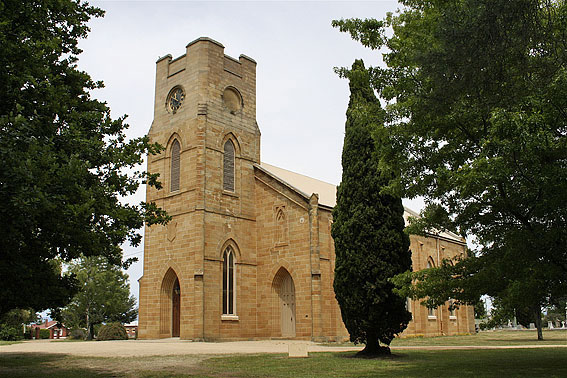
Christ Church Anglican Church, Longford : exterior from south-west
[photograph by Trevor Bunning (December 2008)]
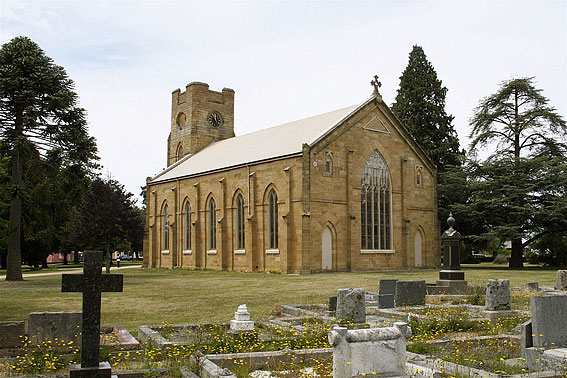
Christ Church Anglican Church, Longford : exterior from east
[photograph by Trevor Bunning (December 2008)]
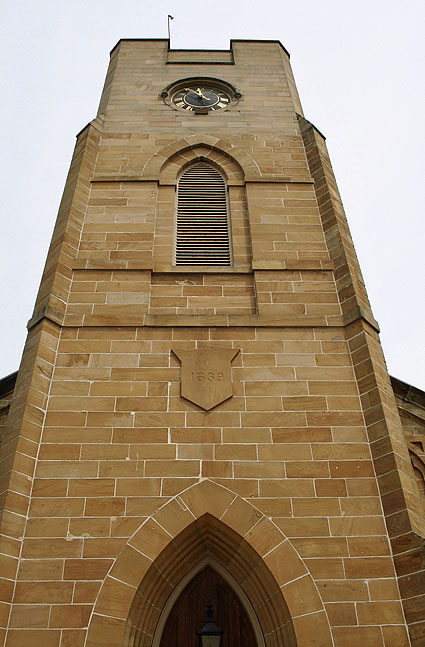
Christ Church Anglican Church, Longford : tower detail
[photograph by Trevor Bunning (December 2008)]
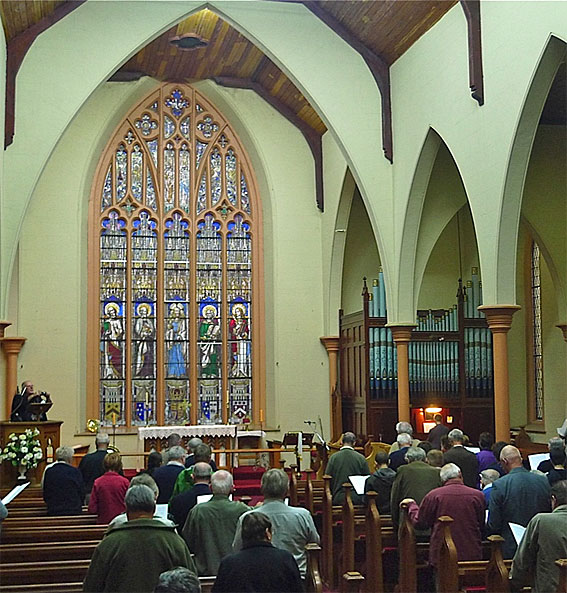
Christ Church Anglican Church, Longford : interior from west
[photograph by Trevor Bunning (29 April 2011)]
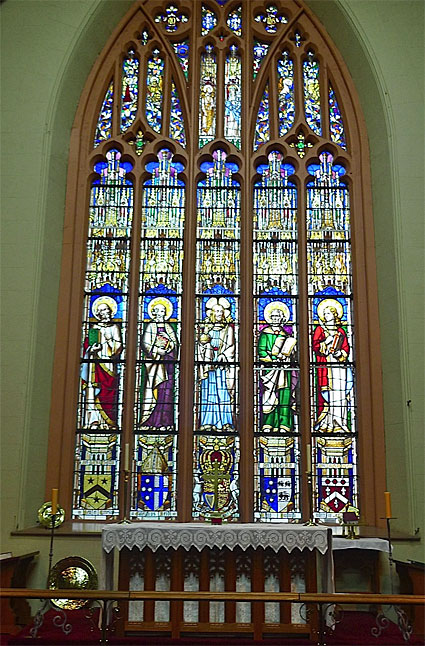
Christ Church Anglican Church, Longford :
east window made in 1842 by William Wailes, Newcastle-upon-Tyne
[photograph by Trevor Bunning (29 April 2011)]
Sited in an attractive and expansive church yard in the centre of this historic town, Christ Church was constructed between 1839 and 1844 to the design of Robert de Little and consists of a broad buttressed nave with cast iron columns (added in 1878).1 de Little (1808-76) came to the colony in 1830 and established himself in Launceston as a builder and architect.2 The magnificent five-light east window, with Perpendicular Gothic tracery, depicting Christ and the Four Evangelists, was made by William Wailes, of Newcastle-upon-Tyne in 1842 and was probably the earliest figural window in the country.3 The carved altar in arts and crafts idiom was designed by Alexander North. The sandstone exterior is dominated by an imposing west-end tower which was completed as recently as 1960 through the raising of the stonework by 15 feet.4 The grounds are entered through a Gothic lynch-gate.
The first pipe organ at Christ Church was built by the London organbuilder James Eagles. Eagles was strongly associated with the Ecclesiological Society and his work was recommended by its members.5 The organ was erected by Messrs Sharp and Son and was reported to be a most splendid toned instrument.6 It was opened on 8 May 1856 by Thomas Sharp and located on the right hand side of the church, facing across the building. Sadly this instrument no longer exists: it was sold to Walter Biggs and was later at the Methodist Church, Lefroy and St Barnabas' Anglican Church, Scottsdale before being broken up in 1965. The earlier organ, a seraphine, a precursor of the harmonium, made by Gunther & Horwood, London, remains in the church and is an extremely rare example of this early free-reed instrument. It is dated at between 1823 and 1829.7
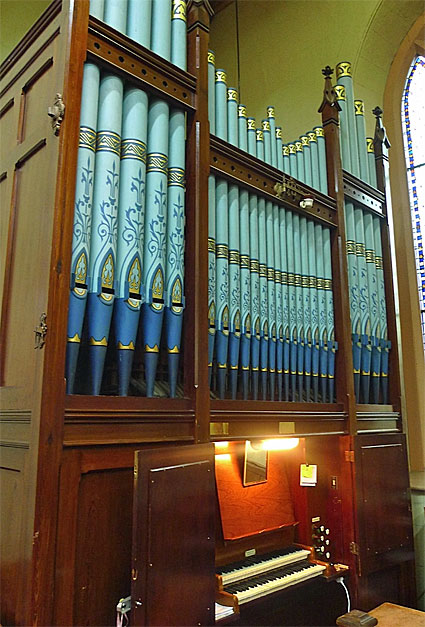
Christ Church Anglican Church, Longford : organ
[photograph by Trevor Bunning (28 April 2011)]
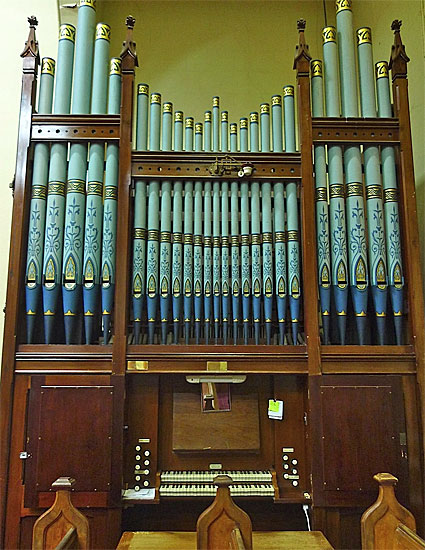
Christ Church Anglican Church, Longford : organ
[photograph by Trevor Bunning (28 April 2011)]
The present organ, built by Bishop & Son, London, was built in 1893 at a cost of £346, the firm's job number 1848. This was one of the final instruments exported to Australia by this illustrious firm, at that time directed by Edward Hadlow Suggate. The following report appeared in early January 1894:
"LONGFORD NOTES" reports under yesterday's date:- Mr C.W. Joscelyne of Launceston completed the erection of the new organ in Christ Church this morning, and the instrument, having been tested by himself and subsequently by Mrs G.H. Arthur (the church organist), was found correct. The organ, which was made by Bishop and Son, London, N.W., has over 700 pipes, 25 of which in blue and gold adorn the front. It has a double-key-board, and the following stops : - Swell organ – Oboe 8, geigen porincipal 4, lieblich gedact 8, mixture 2 rks, vox angelica 8, and violin diapson 8. Couplers – Swell to great, swell to pedals, and great to pedals. Great organ – Harmonic piccolo 2, dulciana 8, open diapson 8, principal 4, and clarabella 8. Pedal organ - Sub-bass 8.8
The instrument was formally opened on Tuesday 31 January 1894. There was a dedication service and organ recital in the afternoon – Miss Frost and Messrs. Thornthwaite and Ferguson played several selections.9
The instrument remains largely unaltered, a swell Mixture, originally prepared for, having been installed in 1970 by David Hudd, on behalf of J.W. Walker & Sons Ltd. It is an admirable example of the Bishop firm's work of the period, with an attractive case containing colourfully stencilled pipes, internal pipework of spotted metal, and delightful voicing.
GREAT
Open Diapason
Clarabella
Dulciana
Principal
Harmonic Piccolo
Swell to Great
SWELL
Violin Diapason
Lieblich Gedact
Vox Angelica
Geigen Principal
Mixture 12.15
Oboe
PEDAL
Bourdon
Great to Pedals
Swell to Pedals
|
8
8
8
4
2
8
8
8
4
II
8
16
|
TC
|
Compass: 58/30
4 composition pedals
Balanced mechanical swell pedal
Mechanical key & stop action10
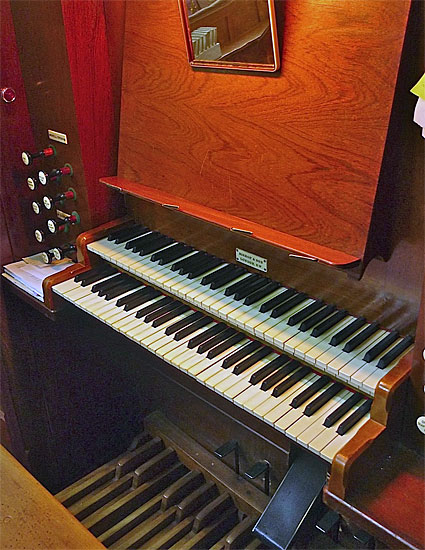
Christ Church Anglican Church, Longford : console
[photograph by Trevor Bunning (28 April 2011)]
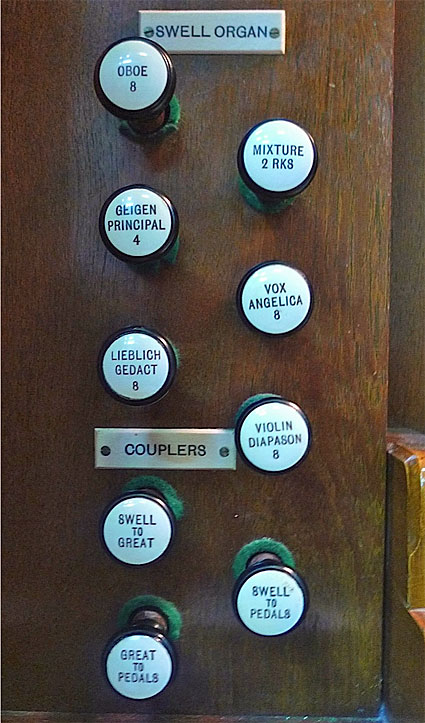
Christ Church Anglican Church, Longford : console – left jamb
[photograph by Trevor Bunning (28 April 2011)]

Christ Church Anglican Church, Longford : console – right jamb
[photograph by Trevor Bunning (28 April 2011)]
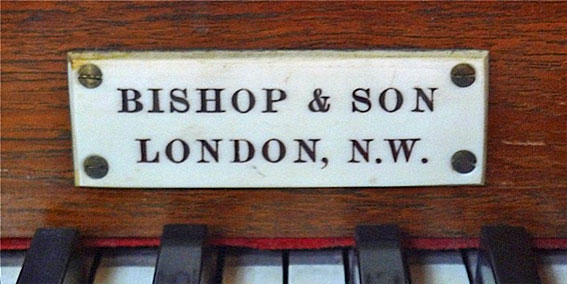
Christ Church Anglican Church, Longford : Bishop & Son nameplate
[photograph by Trevor Bunning (28 April 2011)]
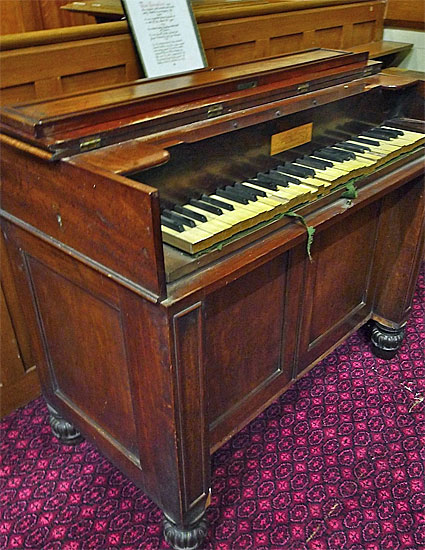
Christ Church Anglican Church, Longford : Gunther & Horwood seraphine
[photograph by Trevor Bunning (28 April 2011)]
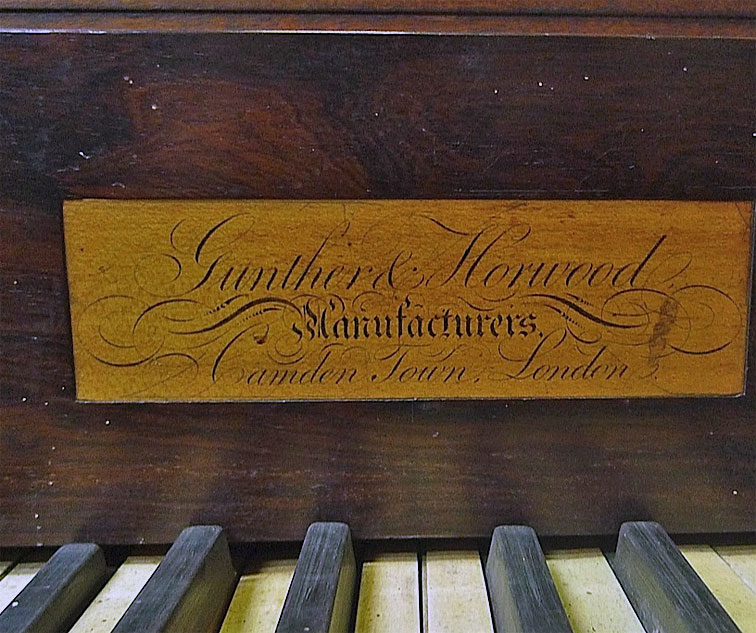
Christ Church Anglican Church, Longford : Gunther & Horwood seraphine – nameplate
[photograph by Trevor Bunning (28 April 2011)]
1 Dorothea I. Henslowe, Our Heritage of Anglican Churches in Tasmania (Moonah, Tasmania: Mercury-Walch, c.1979), pp.43-44
2 Priceless Heritage : Historic Buildings of Tasmania (Hobart : Platypus Publications, 1964), p.130
3 Beverley Sherry, Australia's Historic Stained Glass (Sydney : Murray Child, 1991), pp.14, 28
4 A Short History of Christ Church, Longford (Longford : Vestry of Christ Church, 1989), p.4
5 This is evident in the Society's journal The Ecclesiologist, copies of which are held in the Architecture & Planning Library, University of Melbourne
6 Launceston Examiner, 8 May 1856, p.3
7 Arthur W.J.G. Ord-Hume, Harmonium : the History of the Reed Organ and its Makers (Newton Abbot: David & Charles, 1986), pp.19, 144
8 Launceston Examiner, 4 January 1894, p.5
9 The Mercury, 6 February 1894, p.3
10 Details noted John Maidment 1974












